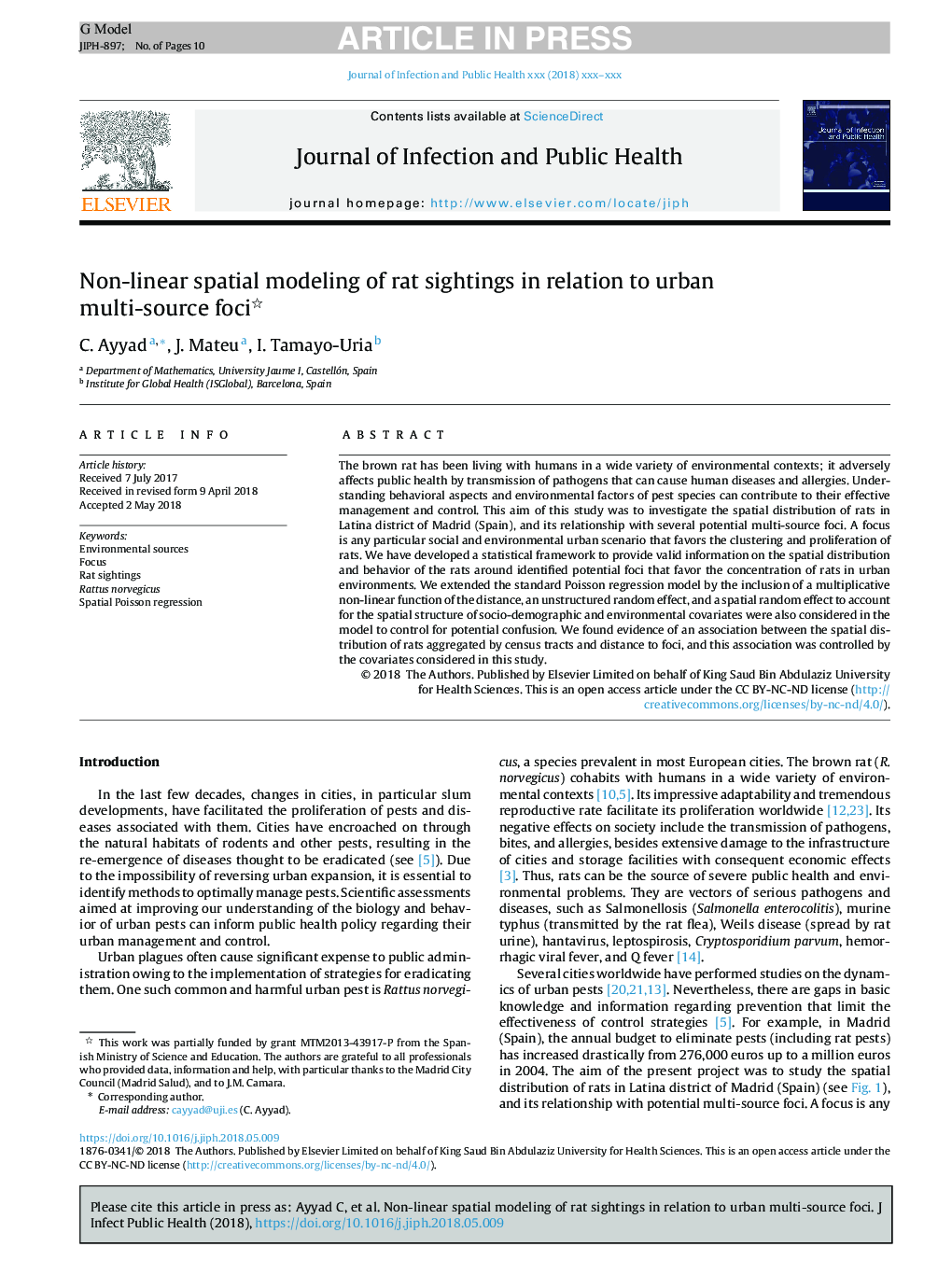| Article ID | Journal | Published Year | Pages | File Type |
|---|---|---|---|---|
| 8957999 | Journal of Infection and Public Health | 2018 | 10 Pages |
Abstract
The brown rat has been living with humans in a wide variety of environmental contexts; it adversely affects public health by transmission of pathogens that can cause human diseases and allergies. Understanding behavioral aspects and environmental factors of pest species can contribute to their effective management and control. This aim of this study was to investigate the spatial distribution of rats in Latina district of Madrid (Spain), and its relationship with several potential multi-source foci. A focus is any particular social and environmental urban scenario that favors the clustering and proliferation of rats. We have developed a statistical framework to provide valid information on the spatial distribution and behavior of the rats around identified potential foci that favor the concentration of rats in urban environments. We extended the standard Poisson regression model by the inclusion of a multiplicative non-linear function of the distance, an unstructured random effect, and a spatial random effect to account for the spatial structure of socio-demographic and environmental covariates were also considered in the model to control for potential confusion. We found evidence of an association between the spatial distribution of rats aggregated by census tracts and distance to foci, and this association was controlled by the covariates considered in this study.
Keywords
Related Topics
Health Sciences
Medicine and Dentistry
Infectious Diseases
Authors
Carlos Ayyad, Jorge Mateu, Ibon Tamayo-Uria,
